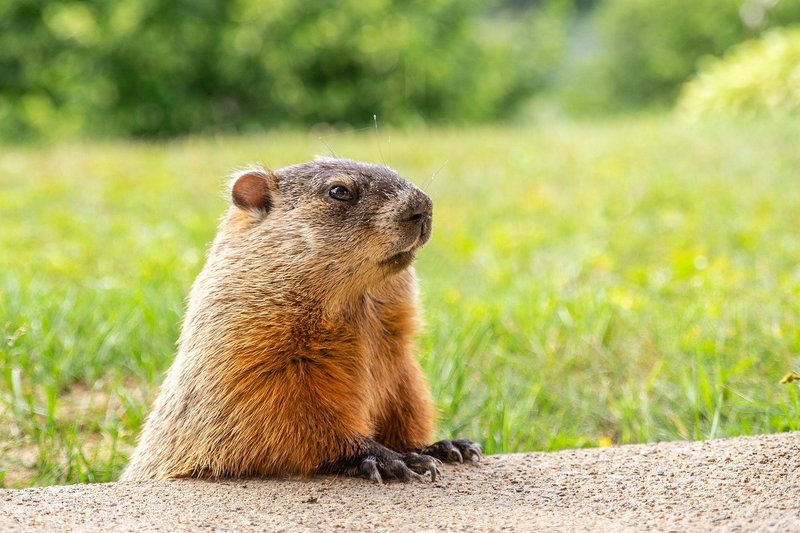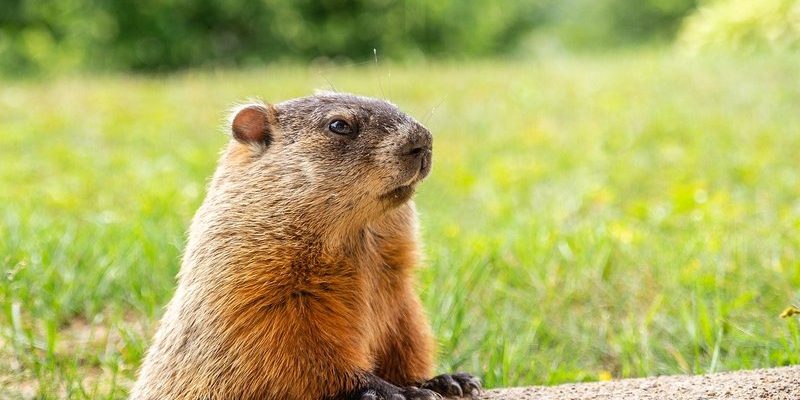
When you think about the groundhog, you might picture it lounging lazily in a field, munching on some grass. But if you dig a little deeper — pun intended! — you’ll discover a fascinating lineage that connects them to other animals, reveals their adaptations, and shows how they’ve survived in various environments. So, let’s grab a cup of coffee and journey through the captivating evolutionary steps of this beloved creature.
What Exactly is a Groundhog?
Before diving into their history, let’s clarify what a groundhog really is. Scientifically, they belong to the family Sciuridae, which is where we find all those cute squirrels and other similar critters. Groundhogs, or Marmota monax, are large members of the rodent family, typically weighing between 5 to 14 pounds. They have stout bodies, short legs, and a bushy tail, making them the quintessential “chunky” rodent you might picture in your backyard.
Groundhogs are also known for their incredible burrowing skills. They can dig extensive tunnel systems underground, which serve as homes, hiding places from predators, and even storage for food. Think about it: having a cozy burrow with an intricate layout is like living in an underground apartment complex!
The Origins of the Groundhog
To trace the evolutionary history of the groundhog, we have to journey back in time to the Oligocene epoch, about 34 to 23 million years ago. During this time, their ancestors adapted to life on land, eventually evolving into what we know as marmots today. These critters were previously much smaller and likely lived in tree hollows or rock crevices rather than digging extensive burrows.
Here’s the thing: as climate and environments began to change, these early marmots had to adapt. Over time, they shifted from being tree-dwelling creatures to burrowing animals. This change allowed them to thrive in open grasslands and fields, where they could find food and evade predators more easily. Isn’t it interesting how evolution nudges animals to become better suited for their environments?
Family Ties: The Marmot Clan
Groundhogs are just one type of marmot, but they have relatives who share similar traits and habitats. There are about 14 species of marmots found throughout the world. For instance, the Alpine marmot lives in the European Alps, while the Himalayan marmot roams in the mountains of Central Asia. Despite varying habitats, they all share that charming and stocky appearance.
What’s fascinating is how family ties can shape behavior. Groundhogs tend to be solitary animals for most of the year, except when they’re raising young, while other marmots, like the Yellow-bellied marmot, are more social and can be seen living in colonies. This variation shows how different living conditions and environmental factors have influenced their development and behavior.
Adaptations That Make Groundhogs Unique
Like many animals, groundhogs have developed unique adaptations that help them survive. Their burrowing ability is perhaps one of the most remarkable. Groundhog tunnels can be up to 30 feet long and include chambers for sleeping and storing food. The entrance of the burrow is often camouflaged with grass or fallen leaves, making it hard for predators to find them.
Additionally, their diet contributes to their evolutionary success. Groundhogs are herbivores, munching on a variety of plants, including grasses, fruits, and vegetables. This diet is key to building the necessary body fat they need to survive their hibernation period. Speaking of hibernation, let’s not forget this remarkable trait that helps them cope with harsh winters. Before winter arrives, groundhogs will bulk up, storing energy to weather the cold months while they’re snoozing away in their burrows.
The Role of Groundhogs in Ecosystems
Groundhogs play a crucial role in their ecosystems. Their burrowing habits help aerate the soil, which benefits plant growth. Think of them as little gardeners of their habitat! As they dig, they also create homes for other animals, like snakes and insects, which often take shelter in abandoned burrows.
Moreover, groundhogs are part of the food chain. They serve as prey for a variety of predators, including foxes, coyotes, and even hawks. So, while you might see a cute groundhog munching on clover, it’s essential to remember that they’re an integral part of a larger ecological balance—like the secret ingredient in a well-balanced recipe!
Cultural Significance and Groundhog Day
Groundhogs aren’t just interesting from a biological perspective; they also hold a special place in human culture. Groundhog Day, celebrated every February 2nd, showcases the relationship between humans and these creatures. It’s a fun tradition where the groundhog, famously known as Punxsutawney Phil, is used to predict the weather for the coming weeks. If he sees his shadow, we get six more weeks of winter; if not, spring is just around the corner.
This annual event is more than just a quirky tradition; it reflects our deep connection with nature. By highlighting the groundhog, we show how important it is to be mindful of the rhythms and cycles of the natural world around us. It’s a day that brings people together, just like Phil brings joy and a sense of community—even if it’s just for a few moments of laughter and anticipation.
So, there you have it—the evolutionary history of the groundhog is a fascinating story of adaptation, survival, and cultural significance. From their early ancestors millions of years ago to their important role in today’s ecosystems and traditions, groundhogs have proven to be more than just a furry face popping out of a hole in the ground.
Next time you spot one in your backyard or watch Punxsutawney Phil make his big prediction, remember the rich and complex journey these delightful creatures have taken. Each groundhog is a little piece of history, reminding us of the wonders of evolution and the connections we share with all living things. Whether they’re burrowing in the ground or celebrating with a big crowd on Groundhog Day, the groundhog continues to charm and educate us about nature’s incredible story.

